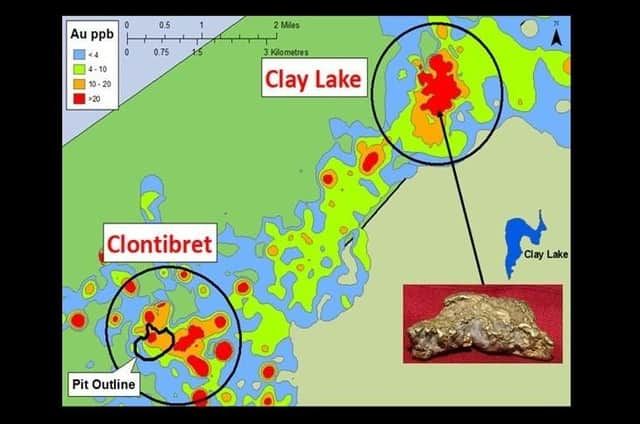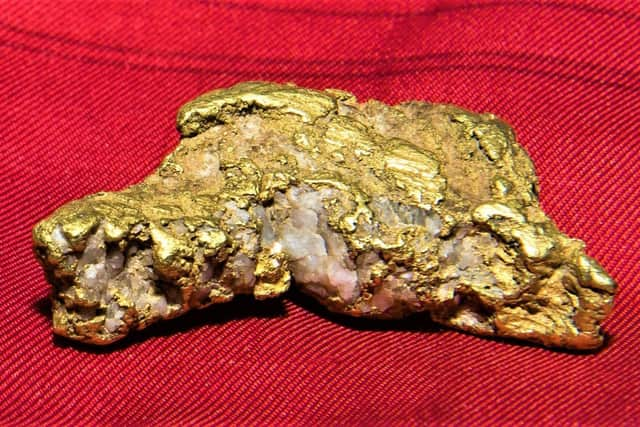Turkish industrial giant now involved in plan to haul gold out from beneath south Armagh


The firm is called Demir Export, headquartered in the Turkish capital Ankara.
The firm already runs gold mines in Anatolia, and is itself part of the mighty Koç Group (pronounced Kotch), which describes itself as “Turkey’s biggest industrial conglomorate”.
Advertisement
Hide AdAdvertisement
Hide AdThe company has now signed a joint venture with Conroy Gold and Natural Resources PLC – a Dublin-based outfit that trades on the London Stock Exchange.


Conroy Gold is run by a former Fianna Fail politician calledProfessor Richard Conroy.
He served in the Irish Parliament as a member of the senate from the 1970s to the 1990s, and there held the posts of government spokeman for Northern Ireland, foreign affairs, and energy and industry.
Whilst he has long been involved in te mineral business, Prof Conroy is actually a specialist in physiology with the Royal College of Surgeons in Ireland, who has done research into jet lag and people’s night-and-day bodily rhythms.
Advertisement
Hide AdAdvertisement
Hide AdConroy has been exploring a region called the Longford–Down Massif for many years.
The massif is basically a big, partly-unified slab of rock, and this one stretches from the southern shore of Belfast Lough all the way to Co Longford in the Republic.
One site in particular is of interest to the firm: the land surrounding Clay Lake in south Armagh.
The zone is known as the “Clay Lake gold target”, and it spans an area of about 140 hectares (350 acres).
Advertisement
Hide AdAdvertisement
Hide AdIt was named after the Clay Lake Nugget; a 30g nugget, with a gold content of 28g, that was found there in the 1980s and is now displayed in the Ulster Museum in Belfast.
According to the firm, the amount of gold deposit to be found in the area is up to 1.53 grams per tonne.
Conroy is a mineral-hunting firm, which seeks to uncover precious deposits, rather then mine them – instead, that is where Demir comes in.
The fact that the two firms have now agreed to join hands heralds a big step towards actually pulling the gold deposits out of the ground on an industrial scale.
Many things about the plan are not known yet.
Advertisement
Hide AdAdvertisement
Hide AdThis includes what environmental conditions will be placed on any extraction licences, when work will begin, or what form the mines will take (though it is thought likely they will be open-cast ones, like quarries, instead of underground tunnels).
The joint venture between the two firms was announced publicly on Tuesday of this week.
A separate project for gold extraction – led by a different company – has run into significant controversy in Co Tyrone. About four months ago it was announced that Nichola Mallon, the infrastructure minister, was calling on the Planning Appeals Commission to convene a public inquiry into the Dalradian mine project in Greencastle, a plan which has sparked around 40,000 representations.
More from this reporter:
Advertisement
Hide AdAdvertisement
Hide AdClick here: Jamie Bryson claims victory over Protocol: here’s precisely how the loyalist believes he has found a way out
——— ———
A message from the Editor:
Thank you for reading this story on our website. While I have your attention, I also have an important request to make of you.
With the coronavirus lockdowns having had a major impact on many of our advertisers — and consequently the revenue we receive — we are more reliant than ever on you taking out a digital subscription.
Advertisement
Hide AdAdvertisement
Hide AdSubscribe to newsletter.co.uk and enjoy unlimited access to the best Northern Ireland and UK news and information online and on our app. With a digital subscription, you can read more than 5 articles, see fewer ads, enjoy faster load times, and get access to exclusive newsletters and content.
Visit
https://www.newsletter.co.uk/subscriptionsnow to sign up.
Our journalism costs money and we rely on advertising, print and digital revenues to help to support them. By supporting us, we are able to support you in providing trusted, fact-checked content for this website.
Ben Lowry, Editor